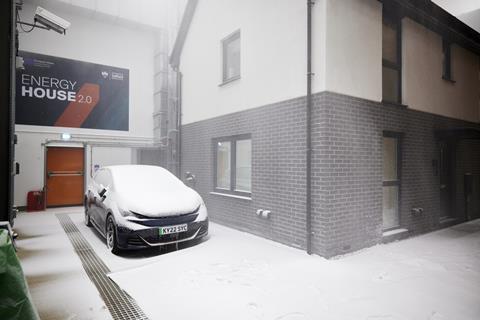Two test homes subject to rigorous testing for past year
The Future Homes Standard can be delivered at scale by 2025 as long as supply chain of key components and skills training can keep pace, a study has found.
Energy House 2.0, a collaboration between the University of Salford, Barratt, Bellway and Saint Gobain, released the first results of its study into home energy performance.

The project, which has been going for a year, has been putting two prototypes through rigorous testing in the University’s climate chamber.
Energy House, built in part due to funding from the UK Innovation Accelerator, can recreate environmental conditions reflecting 95% of the earth’s inhabited land, with temperatures from -20c to 40c, including rain, wind, snow, and solar.
Initial findings from testing the fabric of Bellway’s ‘Future Home’ and Barratt/Saint-Gobain’s ‘eHome2’ – both three-bedroom homes with high performance fabrics – have shown they can face the more extreme weather conditions forecast to become the norm in the coming years.
>> Inside the £16m research centre testing houses against the elements
Both homes had a small difference of up to 8% between the anticipated performance when designed, when compared to the actual performance in climate-controlled conditions.
According to the Future Home Standard, UK homes built from 2025 onwards should produced 80% less in carbon emissions than homes built under the 2013 regulations.
Professor Richard Fitton of the University of Salford said: “Both houses performed well on our fabric testing, with valuable lessons that they can use when designing and building homes in the field.
“They provide important information about the types of materials we need to create homes that lose only a very small amount of their heat.
“Typically, the performance of new build homes, compared to the designed specification, can vary between 5% and 140%.
“The results have showed both homes have performance within the top end of this performance gap and with additional learnings, modifications can be made to further improve the performance of these homes.
“Without Energy House 2.0 this type of testing would take significantly longer to complete, but thanks to the fact we can control temperature to within 0.5c, we have been able to get meaningful data in a matter of months.”
Over the next few months, further research will focus on how homes can maintain heating, hot water and healthy living conditions using low carbon technologies.
Further testing to come out later this year will look at the how effective different types of electrified heating systems are within the homes.











No comments yet